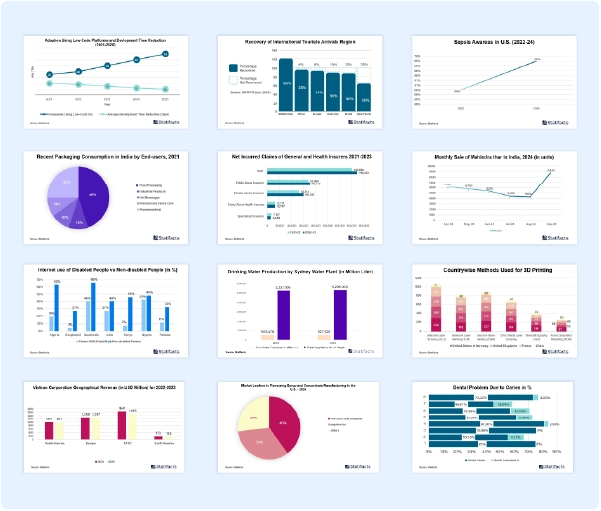

Our customers work more efficiently and benefit from
The global microarray market size was evaluated at USD 5,980 million in 2024 and is expected to grow around USD 1,1430 million by 2034, registering a CAGR of 6.7% from 2025 to 2034.
| Industry Worth | Details |
| Market Size in 2025 | USD 6,380 Million |
| Market Size by 2034 | USD 11,430 Million |
| Market Growth Rate from 2025 to 2034 | CAGR of 6.7% |
The microarray market deals with the technologies and methods used in analysis of analyzing sample RNA and DNA according to its pairing rules by utilizing a gene chip. Numerous probes are set out on a rigid surface establishing a gene chip. This microarray evaluates the cluster of mRNA. Microarray analysis permits biological and various numerical predictions to be made. This technology includes the binding of various nucleic acids to a surface, allowing the evaluation of concentrations of nucleic acid sequences via hybridization and, lately, by detection.
North America dominates the microarray market because of the growing strategic participation between industry leaders and research institutions, rising government creativity that supports in-depth genomics research, and increasing solid investment in developed R&D activities that are anticipated to boost the need for market expansion in the area. Thus, a strong healthcare framework and well-known regulatory infrastructure for medical apparatus guarantee the compliant acceptance of microarrays in clinical methods, leading to market expansion.
Asia-Pacific is the fastest growing in the microarray market during the forecast period as it is boosted by increasing research support, growing healthcare infrastructure, and increasing technological development in microarray technology within the region. With the expanding usage of customized health and pharmacogenomics, there is a growing demand for research and diagnostics for high throughput mechanisms. China, India, South Korea, and Japan are the major countries especially China’s biotechnology sector is expanding on a rapid scale because of the investments from both ends viz. public and commercial sectors. The growing need for customized medicines and increasing significance of personalized medicines in China are anticipated to boost the expansion of the market.
The developments of genomic research and technologies on a rapid scale, like CRISPR and next-generation sequencing (NGS), are boosting the need for microarray analysis. These technologies correlate with microarrays, permitting broad genomic studies and speeding up discoveries in numerous sectors. Growing government support and initiatives for precision medicine and genomic research are driving the market growth. International and national projects targeted at grasping genetic disorders and enhancing public health are assisting the acceptance of microarray technologies.
The high expenses linked with microarray determination, including the expense of apparatus, skilled personnel, and reagents, can be a hurdle to approval, mainly for small research institutions and laboratories with restricted budgets. The exposure of alternative technologies, like digital PCR and NGS, poses a threat to the microarray market. These technologies provide complementary and, in a few cases, superior abilities, potentially affecting the need for conventional microarrays. Microarray analysis develops a vast quantity of complex information that needs advanced bioinformatics methods and proficiency for interpretation. Handling and determining these datasets can be difficult and delaying.
Artificial intelligence has evolved as a powerful method that tackles anthropomorphic information and offers accelerated solutions to compound challenges, with several applications in the microarray market. By using AI algorithms that determine extensive biological information that involves proteomics and genomics, researchers can detect disorder-linked targets and forecast their interactions with potency drug candidates. This permits a more structured and specific attempt to drug discovery, thus growing of successful drug acceptance. Moreover, AI can lead to decreasing the development expenses by understanding R&D procedures. Personalized medicine attempts can be structured via AI algorithms that determine real-world patient information, contributing to more effective treatment results and enhanced patient adherence.
Microarray technologies are used for numerous purposes in clinical and research studies, like evaluating gene expression and analyzing target DNA sequences. Microarrays were extensive as they let genomic determination without even sequencing, which enormously decreases the expenses of doing huge studies over a broad spectrum of biomedicine and even biology. Considering gene expression analysis information might be gathered from hundreds of different experiments, information sets can be distinctive in size. Information heterogeneity is considered a huge challenge for scientists, and a vital role is generally played by biostatistics and bioinformatics.
For any questions about this dataset or to discuss customization options, please write to us at sales@statifacts.com
| Stats ID: | 8165 |
| Format: | Databook |
| Published: | April 2025 |
| Delivery: | Immediate |
| Price | US$ 1550 |

| Stats ID: | 8165 |
| Format: | Databook |
| Published: | April 2025 |
| Delivery: | Immediate |
| Price | US$ 1550 |

You will receive an email from our Business Development Manager. Please be sure to check your SPAM/JUNK folder too.

Unlock unlimited access to all exclusive market research reports, empowering your business.
Get industry insights at the most affordable plan
Stay ahead of the competition with comprehensive, actionable intelligence at your fingertips!
Learn More Download
Download
